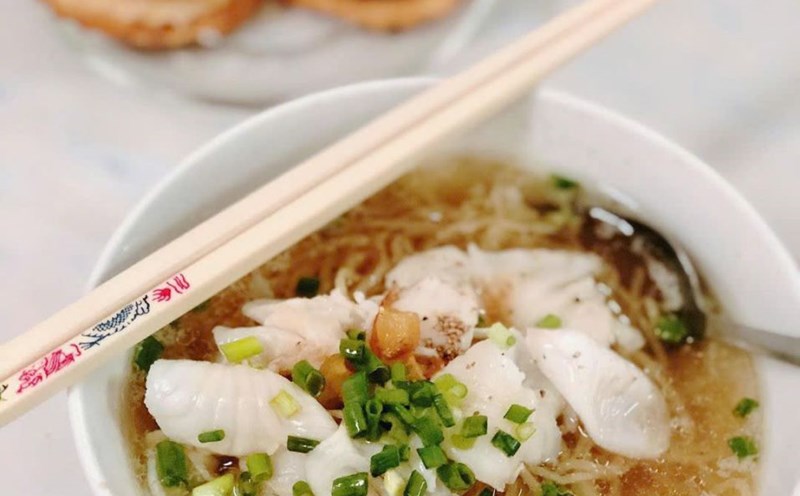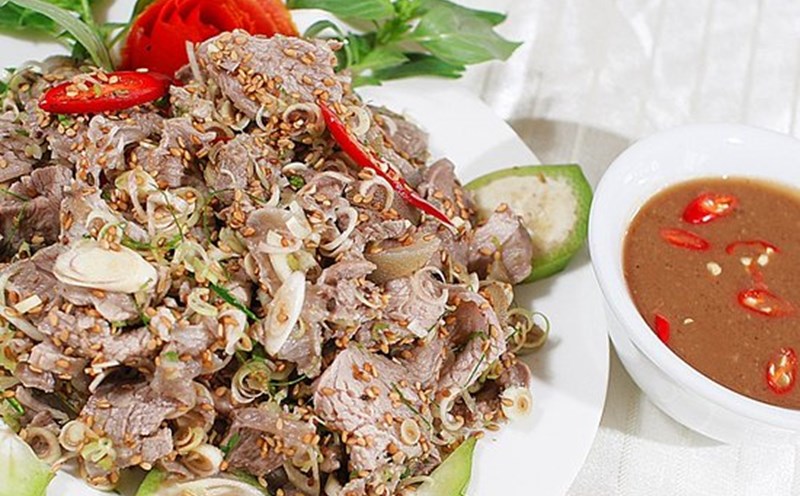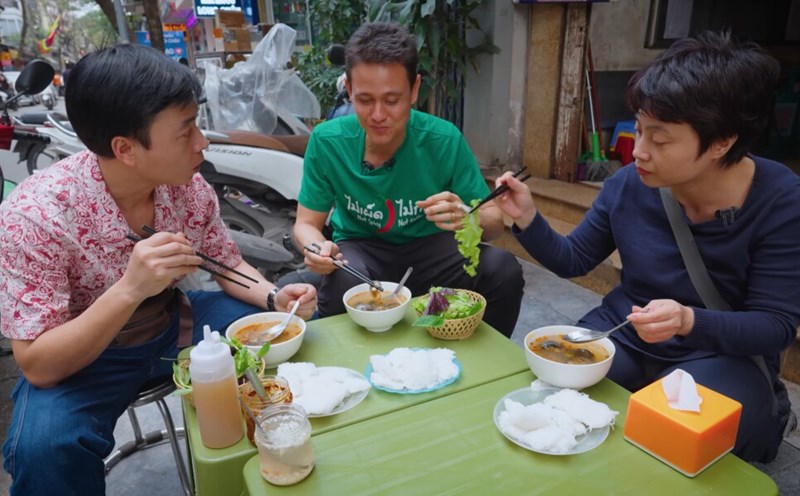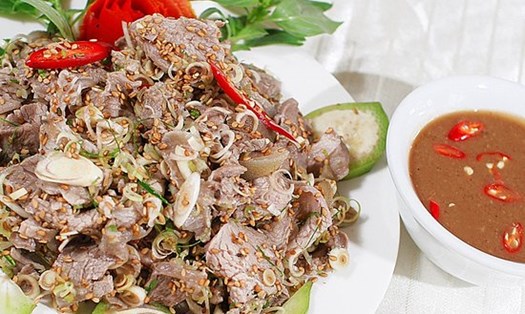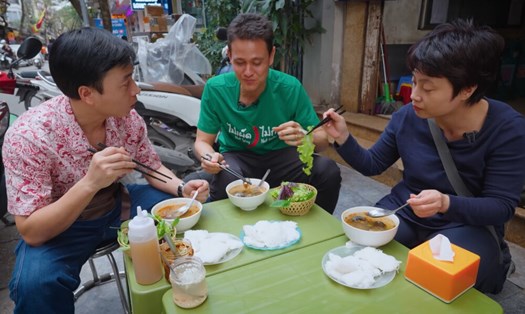It is not enough to bring heat but still a little chilly, making people crave cold, foaming cups of steam beer or hot and sour salad to cool down. And especially a plate of red jelly with a drop of vinegar.
Red Jade is originally a unique street food. It appeared in early summer, because that was also the season of catching crabs in coastal areas such as Hai Phong and Nam Dinh. This dish is very suitable for the taste of the working class, who are very good at turning things that seem to be thrown away into a delicious, unique dish that suits their budget.
Therefore, in the menu of "playing" to celebrate International Labor Day 1.5, red khmer with vinegar suddenly emerged as a special choice. Young, juicy, and weldable, so it is very suitable for cooling the body. Not only that, red jelly is also a favorite dish, so it is even more wonderful.
Many delicious dishes in Vietnamese food stores are created by the industry to serve themselves, before spreading throughout society. Taking advantage of pre-made and cheap ingredients that are less popular as delicious dishes is a characteristic of workers with the personality of being frugal and skillful in culinating.
Thanks to that personality, things that were previously "squeezed and cold-fried" such as potato fish (difficult to cook, hard-shelled, difficult to sell) and longan ( hard shell, difficult to sell), itchy potato strips and tough buffalo skin have become specialties. Jellyfish is the same, which is often thrown away when fishing because it is very weak and creepy, now it is as valuable as a luxurious sashimi.
In the tropical waters of Vietnam, there are many types of jellyfish, some of which are scary for those who swim for the sea because of the jellyfish such as hot jellyfish and plow job job. However, there are also harmless jellyfish that can be used as food such as red jellyfish and white jellyfish.
White mermaid is more popular, often appearing from the Thanh Hoa sea to the South. Every supermarket sells bagged white khmer to make salad, so the khmer is mixed with roasted peanuts, papaya, goldsmith, basil, vinegar, sugar to become a familiar drink.
Red mermaid is almost only caught in the waters of Hai Phong and Nam Dinh, where mangrove mangrove forests are located. Originally, jelly is a liquid species, the body is full of water, left in the air for a while and then disappears, leaving only the skin of the male Crust. Therefore, when catching red jelly, you have to soak in a water bar with the roots or shells of the saw ghosts.
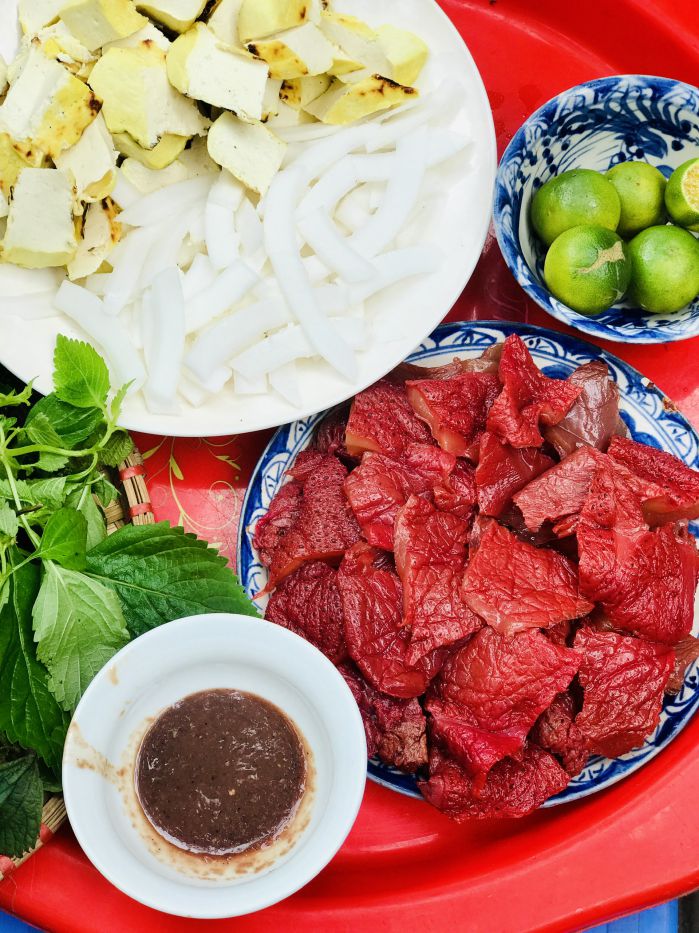
The acrid substance in the bark, the roots of the parrot tiger tree produce soaked water will help jellyfish insoluble, but increase the crispness and have a dark red color. When catching jellyfish, fishermen always bring this water tank to soak as soon as jellyfish left the sea. Where there is no parrot, you have to buy the tiger tree bark to be powdered to soak jellyfish.
Hai Phong is the hometown of the sudden red-dried jellyfish with many jellyfish stalls selling on the sidewalk or near food markets such as Co Dao market to serve workers with a piece of play after a day's work. Just a Jellyfish is cut into pieces with a sauce mixed with vinegar and sugarcane, which is enough to serve a cup of wine and a cup of beer.
And then the red jellyfish followed the Hai Phong people to Hanoi, the pioneer had to mention that Mrs. Ngu at the market had been selling this dish for decades, now it has been passed down to the third generation. Previously, to eat red jellyfish, you had to go to the market, then transfer it to Le Van Huu. But now, many places are sold out, Thanh Ha alley beginning, Cho Dua corner, Duong Thanh border...
Jelly stores in Hanoi, after receiving jelly boxs from Hai Phong to Hanoi, will pour the jelly in clean water, including dropping a few sliced kumquat pieces. The Jade is marinated in water with refreshing kumquat essential oil, absorbing the open smell of the skin and roots of the crab.
A pot of red-brown jellyfish, filled with yellow and green kumquat pieces is a sign for jellyfish addicts to know where to play. Red jelly is inherently tasteless, so the supporting ingredients are the soul of the dish. For example, in Hai Phong, the vinegar sauce is suddenly mixed with sugarcane honey, both sour and sour and sweet.
But the way to eat jelly in Hanoi is different, using whole shrimp paste, squeezing lemon and foaming, adding a few pieces of red chili to make a dipping sauce. The fragrant salty taste of shrimp paste is also very suitable for jelly, especially when eaten with grilled turmeric tofu, coconut pulp and spices such as perilla, Korea Korea.
The jellyfish also has classified products such as salmon and tuna sashimi. But instead of being a crispy hunting pillow with a soft, fatty belly, the Jelly is divided into legs and torso. "Oh, this part is called this leg, eating it is both tough and crispy, while the body is softer and more juicy".
As soon as she explained, the jellyfish seller held a bamboo knife (made from a thin, sharp bamboo stick) and cut the jellyfish into rectangular pieces about 2 fingertips long, about 2 fingers wide, and placed it on a plate of white and blue enzyme. The red jelly legs were as stewed as beef, with a slightly wrinkled and stiff surface. The trunk is no different from a jelly, water-y, and has a rough surface.
After cutting the jellyfish into pieces into plates, she scooped the shrimp paste into a small bowl for customers to add the lemon and chili themselves, then held the grilled tofu stick to golden brown, cut into squares. It must be Mo bean, thinner as three fingers, golden turmeric color, grilled to taste and rich.
After finishing the beans, she quickly exchanged knives, held coconut worms, cleverly cutting them into pieces about a liter thick, moderately long, neatly arranged next to the tofu. Finally, she took out a bowl of perilla and the border to prepare a plate of jelly, tofu, and coconut pulp. That was it!
Eating jelly is like eating bank sticks or sashimi. The packaging is a large red perilla leaf to arrange the border, jelly, tofu, and coconut in pieces. When fully grown, skillfully wrap the perilla leaves in a tight piece so that the filling does not fall when dipped in a bowl of shrimp paste and when dipped in the mouth.
When chewing the roll, you will see an explosive combination of flavors. The cool porcelain like jelly has a temporarily salty taste mixed with the refreshing aroma of kumquat peel, tofu has a temporarily rich and fragrant aroma of charcoal, coconut worms are sticky and crispy, perilla essential oil, the crunchy texture of the salty taste of lightly sour shrimp paste with the scent of lemon and the strong spicy taste of chili.
The red jellyfish find is really strange. The heat is uncomfortable, but after a few bites it suddenly cools down. The thorn and tongue blooms to satisfy the taste, while the pieces of red jelly, yellow beans, white coconut, purple perilla, green Korea, and brown shrimp paste gradually disappear when the afternoon light is still hazy on the sidewalk.

